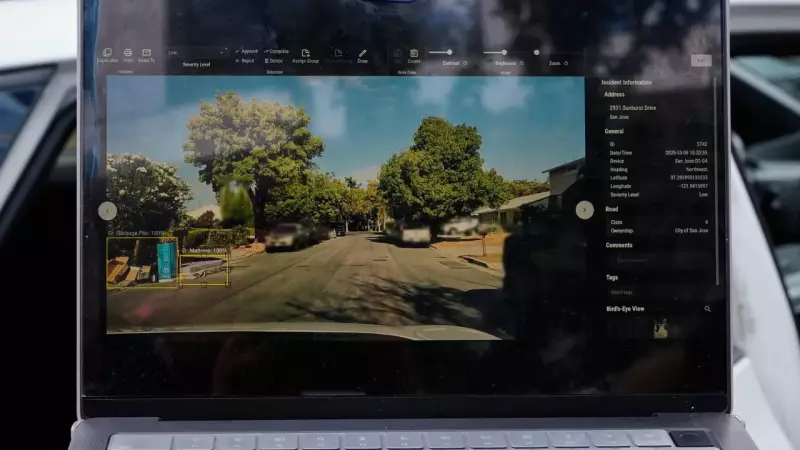
Across the United States, deteriorating road infrastructure and increasing traffic fatalities are pushing state and city governments toward an unexpected solution: artificial intelligence. From the tropical islands of Hawaii to the vast highways of Texas, AI-powered systems are now scanning roads, identifying hazards, and prioritizing repairs in ways manual inspections never could.
Hawaii's Digital Watchdogs: 1,000 AI Dashcams Hit the Roads
The Hawaiian islands have launched an ambitious "Eyes on the Road" initiative that's distributing 1,000 AI-enabled dashboard cameras to motorists. This technology represents a significant shift from traditional monthly inspections to real-time monitoring. The AI systems automatically detect damaged guardrails, missing road signs, and faded pavement markings, immediately alerting repair crews.
Richard Browning of Nextbase, the company that developed Hawaii's system, emphasized the transformative nature of this approach. Unlike traditional methods where problems might go unnoticed for weeks, the AI provides instant alerts, enabling rapid response teams to address issues before they become serious hazards.
Roger Chen from the University of Hawaii, who helps manage the program, highlighted the unique challenges facing the island state. "Equipment has to be shipped to the island... it's not an easy problem," Chen explained, noting that Hawaii's geography and older infrastructure make maintenance particularly difficult.
The urgency of Hawaii's situation became tragically clear when the state settled a $3.9 million lawsuit after a 2020 fatal accident involving a guardrail that had remained unrepaired for 18 months. By October 2025, Hawaii had already recorded 106 traffic fatalities, surpassing the previous year's total and underscoring the critical need for improved road safety measures.
Smart Cities Lead the Charge: San Jose's 97% Accuracy Breakthrough
Meanwhile, in California, San Jose is expanding its innovative pilot program that uses cameras mounted on street sweepers and parking enforcement vehicles. The results have been impressive—city officials report the system correctly identifies potholes with 97% accuracy, dramatically improving the efficiency of maintenance operations.
Mayor Matt Mahan stressed the importance of collaborative data sharing between cities. "We could wait five years for that to happen here, or maybe we have it at our fingertips," he remarked, highlighting the potential for accelerated progress through shared intelligence.
San Jose's leadership extends beyond its city limits—the municipality helped establish the GovAI Coalition in 2024, bringing together representatives from California, Minnesota, Oregon, Texas, Washington, and Colorado to collectively address infrastructure challenges through artificial intelligence.
Texas Scales Up: AI Scans 250,000 Lane Miles
Texas, which boasts more roadway miles than the next two largest US states combined, has embraced AI tools to manage its massive transportation network. Jim Markham of the Texas Department of Transportation revealed that AI technology has been instrumental in flagging outdated signs across 250,000 lane miles of roadway.
"Having AI that can go through and screen for that is a force multiplier," Markham stated, emphasizing how the technology amplifies the effectiveness of limited maintenance resources.
The state is also utilizing advanced systems like StreetVision, a mobile-based tool that identifies dangerous driving patterns. In one notable instance, the system detected sudden braking on a Washington, D.C. roadway—analysis revealed the cause was a bush obscuring a stop sign. Ryan McMahon of Cambridge Mobile Telematics noted the simple solution: "That brought me to an infrastructure problem, and the solution... was a pair of garden shears."
The Road Ahead: Building Infrastructure for Autonomous Vehicles
Experts view these developments as crucial preliminary steps toward preparing infrastructure for a future where human-driven and autonomous vehicles share the road. Mark Pittman, CEO of Blyncsy, which participates in Hawaii's dashcam program, predicted that most new vehicles will soon come equipped with built-in cameras as standard features.
"They're now building infrastructure for humans and automated drivers alike, and they need to start bridging that divide," Pittman explained, highlighting the dual-purpose nature of these technological advancements.
As American cities and states grapple with aging infrastructure, stretched budgets, and concerning traffic fatality statistics, artificial intelligence emerges as a powerful ally in the quest for safer, better-maintained roads. The transition from periodic manual inspections to continuous AI-powered monitoring represents a fundamental shift in how communities approach public safety and infrastructure management.





